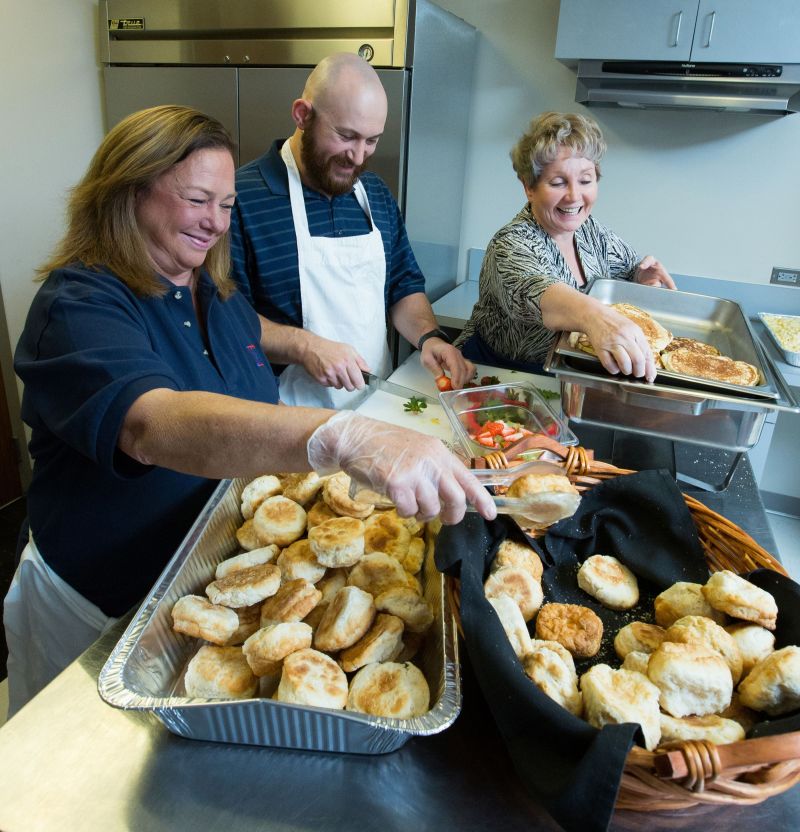Emergency Preparedness
 With no exceptions for hurricanes or manmade disasters, TECO's chilled-water and steam service must run as planned or irreplaceable research and the health and welfare of patients at Texas Medical Center institutions could be in jeopardy.
With no exceptions for hurricanes or manmade disasters, TECO's chilled-water and steam service must run as planned or irreplaceable research and the health and welfare of patients at Texas Medical Center institutions could be in jeopardy.
TECO has proved it can weather storms of all shapes and sizes. It endured Hurricane Alicia in 1983; Tropical Storm Allison in 2001; Hurricane Rita in 2005; Hurricane Ike in 2011; and then Hurricane Harvey, a Category 4 storm, in 2017. In each instance, because of careful planning, engineering and investment, TECO maintained uninterrupted district energy service to its customers. (Learn more about TECO and Hurricane Harvey.)
Fine-tuned plan. TECO has a detailed emergency preparedness plan that outlines how to proceed if there is an impending storm or how to react if there is a sudden manmade disaster.
Optimal system design. TECO designs optimal system redundancy into all facets of its operations. The Central Plant (Paul G. Bell, Jr. Energy Center) houses a robust 48 MW combined heat and power unit that enables TECO to provide all of its own electricity and continue chilled-water and steam service even if the electricity grid fails. TECO’s floodwall and floodgates mitigate the effects of potential area flooding. TECO’s chilled-water system is interconnected between the Central Plant and South Main Plant, allowing chilled water to flow to customers from either plant if one is unable to function.
Optimal maintenance and inventory. TECO’s computerized preventive maintenance program lists each piece of equipment and details maintenance protocols, ensuring reliable operation. More than 13,000 spare and critical parts are kept in inventory, including motors for condenser water pumps, chilled-water pumps, cooling tower fans, boiler feed water pumps, raw water pumps and water well pumps.
Preparedness drills. TECO conducts regular training and emergency drills with employees and contracts with a nationally recognized weather service to provide detailed forecasts for the area. It also participates in special preparedness drills in coordination with the Texas Medical Center, the state of Texas, Harris County and the city of Houston.
Equipment testing. TECO thoroughly tests and commissions each piece of equipment installed to ensure it works as specified under trying conditions. For instance, it tests manhole seals within our plants, verifying they can handle 15 feet of water and still hold.
Ride-out team care. TECO’s plan details the size, composition and care of TECO’s ride-out team – the group of employees selected to stay on-site at the plant during emergencies to ensure continuity of service. TECO commits to sheltering 35 employees in place for seven days, which means the company must prepare for their care. TECO has prepared recipes and shopping lists for healthy meals and procedures to ensure that the proper plant and personal protection equipment, nonperishable food, and bedding and hygiene items are on-site as needed. A just-in-time shopping plan is ready for ordering perishable food. A dedicated kitchen team serves three meals a day to everyone on the ride-out team.
MADE to respond. TECO participates in the Mutual Assistance for District Energy (MADE) program through the International District Energy Association (IDEA). MADE, a voluntary program, gives participating IDEA members access to disaster assistance in the form of personnel or equipment from companies who know their business. The goal is to get the district energy system back up to full strength as quickly as possible.
In addition to TECO, MADE program members that are providing and receiving assistance include ConEdison, New York; Citizens Thermal, Indianapolis; and Veolia North America, which has district energy systems in such locations as Philadelphia and Baltimore. IDEA also holds annual online training sessions for participants, reviewing case studies of actual disasters and simulating emergency situations.
